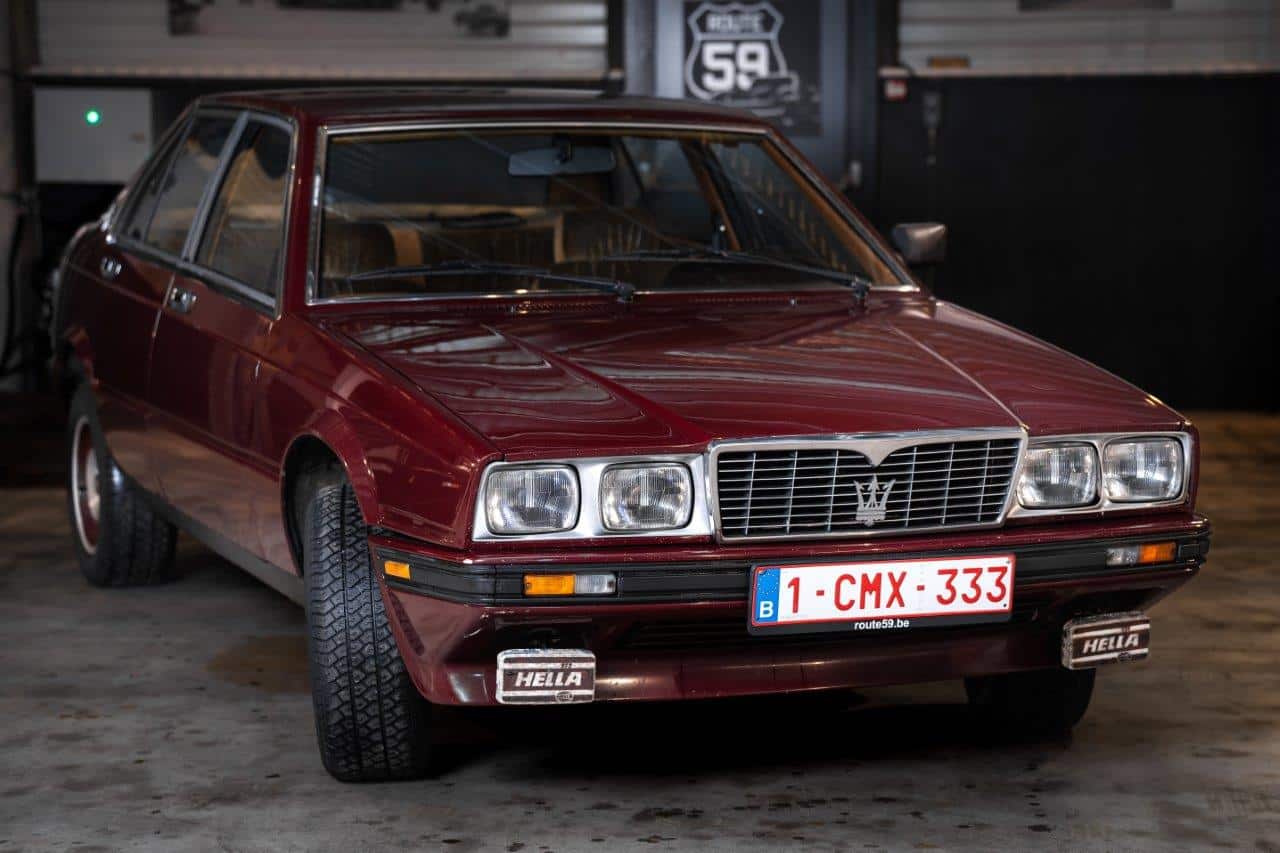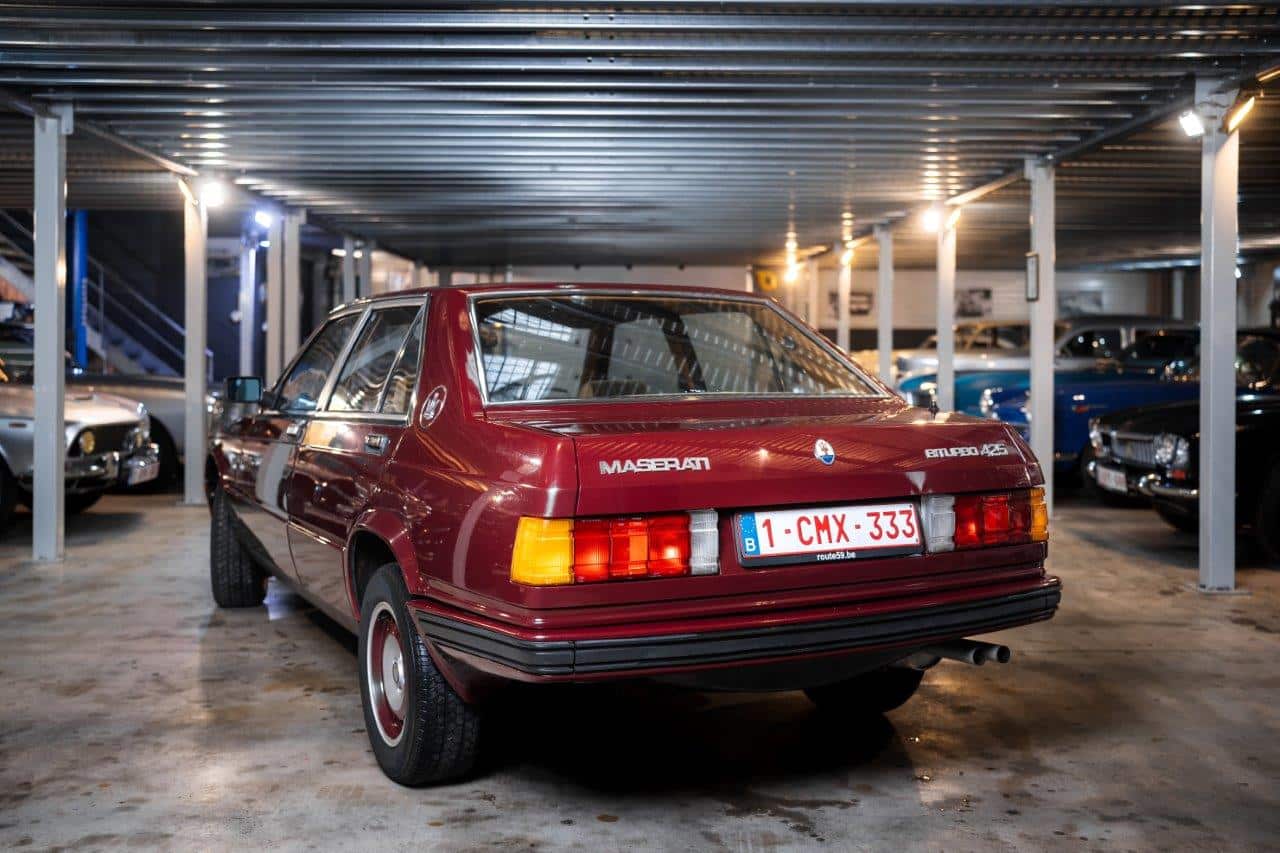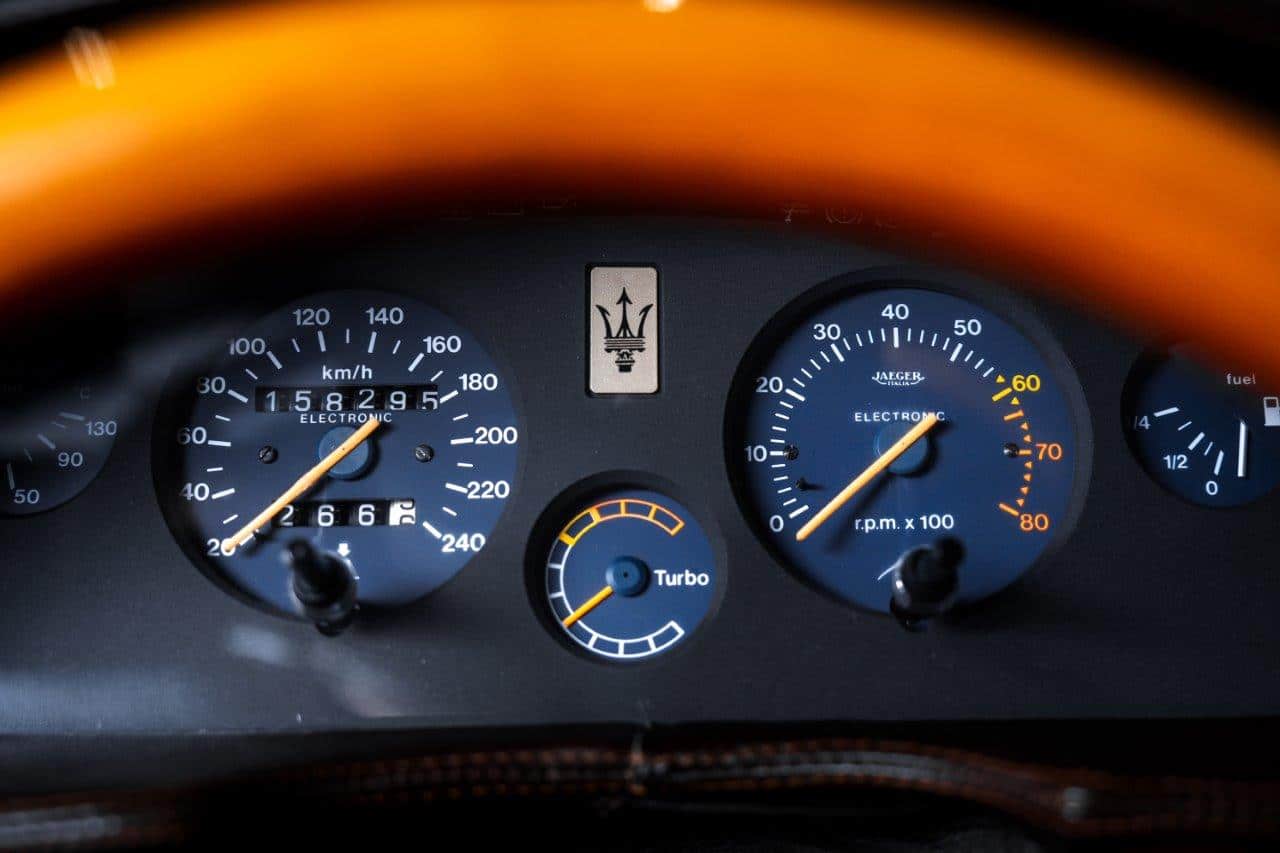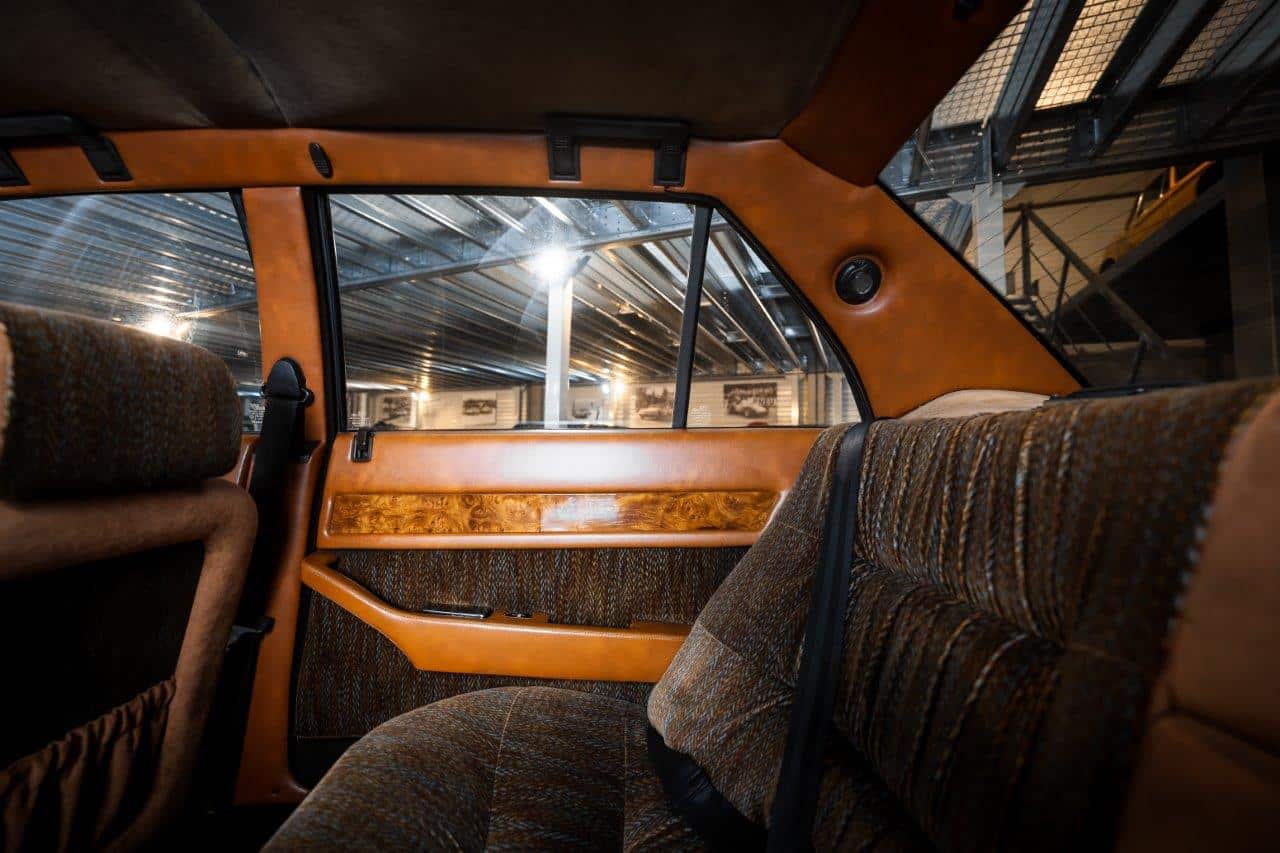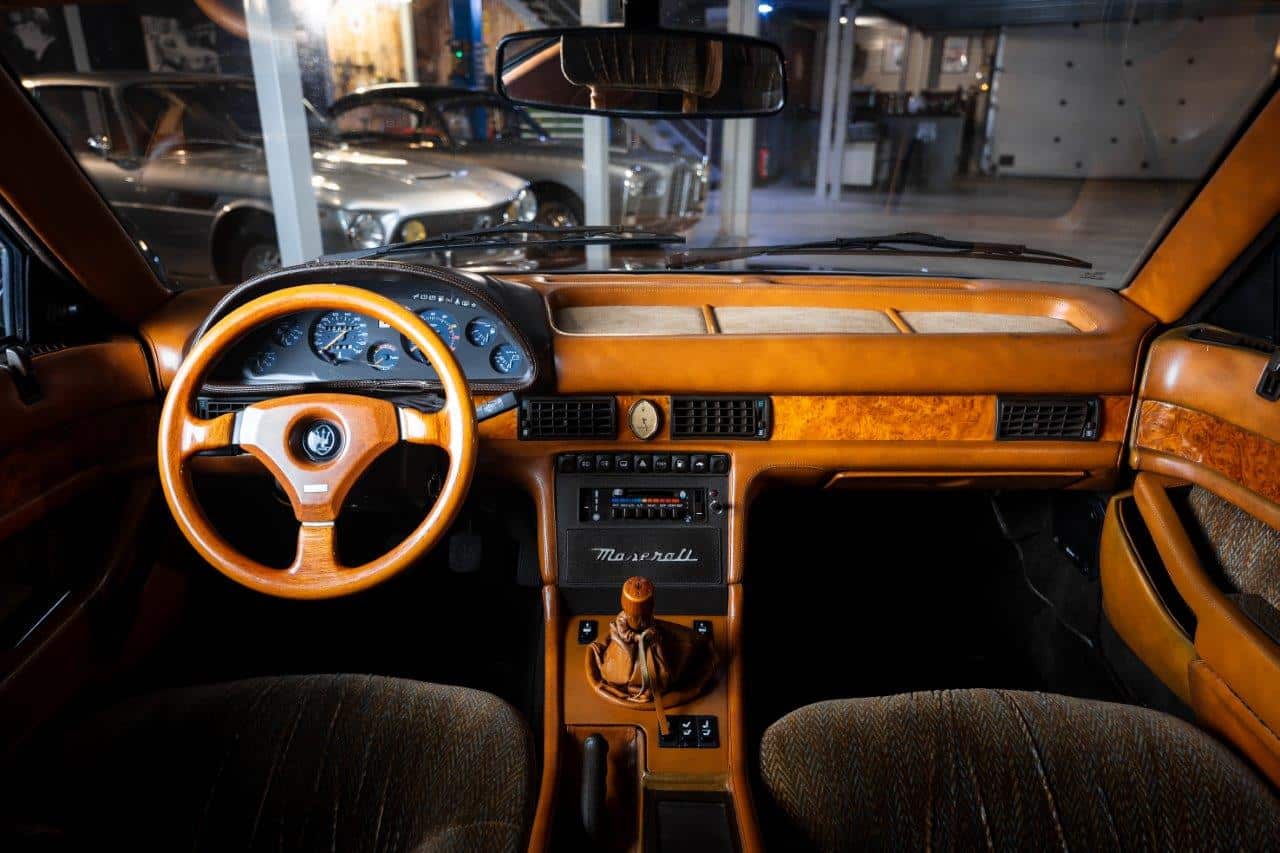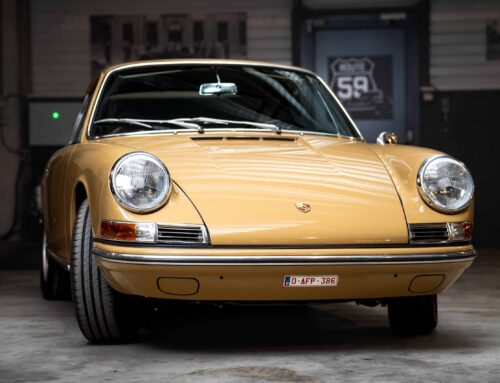Maserati Biturbo 425
| Brand | Maserati |
| Model | Biturbo 425 |
| Color | Red |
| Transmission | Manual 5-speed |
| Pk | 200 ch |
| Year | 1985 |
| Price | Not for sale |
The 425 sedan (for 4 doors, 2.5 liters) was presented at the traditional press conference on December 14, 1983. It was the very first Biturbo sedan. Designed in the same way as the Biturbo coupé by Pierangelo Andreani, it incorporated as many parts as possible (hood, mechanics, running gear). But the sedan gained 24 cm in length (4.39 m), 8.9 cm in wheelbase (2.60 m) and 6 cm in height for rear passenger headroom (1.36 m). It remained compact, however, slightly larger than the 4-door BMW 3 Series, and was not given the “Quattroporte” appellation, as the Quattroporte III was produced alongside the Biturbo until 1990.
The 425 inaugurates the rounded dashboard and the oval Bouchet-Lassale watch, gilded and turned slightly towards the driver. The rounded dashboard will be found on the Biturbo up to the Ghibli II and Quattroporte IV, with a slightly different graphic design, and the Swiss Lassale watch will become a Maserati classic, since the oval shape of the watches will still be present in 2021.
With its compact appearance, the 425 was seen as a competitor to the 4-door BMW 3-series, but was in fact much more expensive and dynamic. Priced at 249,000 French francs in 1987 (worth 65,000 euros in 2020), its price was closer to that of larger sedans such as the 6-cylinder Jaguar XJ, BMW 5 and early 7 series, Mercedes 280 and early S.
The 425 belongs to the first Biturbo generation, and with good reason: it was the very first Biturbo sedan, and Pierangelo Andreani had already begun work on it in 1981, even before the presentation of the Biturbo coupé on December 14, 1981.
Legroom for rear passengers is excellent in the 425, better than the photos would suggest because the rear seat is long. There’s much more legroom than in a much longer Jaguar XJ 6 from the same era (I tested both in the rear).
In the Biturbo epic, the 425 inaugurated quite a few things: 4 doors, of course, but also the digital name (425), the rounded dashboard, the Lassale watch, the Maserati inscription on the (real) wood of the dashboard and new door handles:
The Maserati 425 uses the carbureted 2.5-liter V6 Biturbo engine without intercooler that was released on the Biturbo E (Export) coupe in 1983. However, this engine is boosted from 185 (on the coupé) to 200 hp (on the 425) in order to compensate for the 100 kg of extra weight (very relative at 1180 kg) of the saloon compared to the Biturbo coupé (1086 kg):
With its 200 hp engine, the 425 is well equipped to be at ease in all circumstances. As the weight of this compact sedan was kept to a minimum, its performance was first-rate for its time, with a 0 to 100 km/h time of 6.9 seconds and a top speed of 215 km/h. However, while the very supple suspension settings give the car undeniable comfort, you have to remain humble with the throttle when cornering, as the running gear is a little overwhelmed by the power of the engine in a very sporty attack. But in normal use, the pretty 425 is most pleasant and comfortable to drive serenely.
From mid-1985 onwards, improvements to the Biturbo II coupé appeared on the 425: Sensitork self-locking differential to replace the rudimentary Salisbury, MABC electronic turbo boost control and water-cooled turbos.
The 425 carbu was produced from March 1984 to January 1987, when it was replaced by the 425 i, produced from February 1987 to February 1988, when it was replaced by the 430.
This model has a fairly comprehensive service history, with a number of parts replaced. The air conditioning works. It comes with its original manual and service booklet. Its last owner kept the car for 32 years.
Work in the last 5,000 km :
- clutch
- overhaul of steering rack and replacement of suspension silentblocks
- brake system overhaul
- geometry
- all belts, timing belt made in June 2024
- valve adjustment
- igniter adjustment
- new exhaust system
The interior is perfect and free of defects. The chassis is corrosion-free and spotless. On the bodywork, there’s corrosion at the end of the right front fender, at the bottom of the passenger door and around the right front fender (see photos in the file below).
Successful (no remarks) technical inspection done in July 2024



